Container homes are a great way to reduce your carbon footprint and create a unique living space, but you can also save a ton of money compared to the cost of traditional building materials.
This article provides tips on how to know if it’s legal to build a container home in your area, building codes, and regulations to keep it safe and secure over time. This includes advice on proper maintenance techniques and steps for preventing potential damage from extreme weather conditions or other unexpected events.
You’ll also discover how to find the perfect size and type of container for your home, how to prepare the containers for conversion, and what modifications and insulation need to be done. You’ll understand how to properly install plumbing and electrical systems in your shipping container home if you DIY your build and what types of appliances and furniture will fit best inside. Finally, you’ll see the best ways to structure your shipping container home for maximum energy efficiency.

Shipping container houses are sustainable and reduce your carbon footprint
Shipping container homes offer an innovative and efficient way to reduce your carbon footprint. You can build a beautiful home without sacrificing the environmental benefits of traditional construction materials. Plus, you can use recycled shipping containers for your home, creating a beautiful and sustainable space without breaking the bank.
Shipping container houses are also incredibly durable, making them an excellent choice for any family looking to invest in their future. The strength of the steel means that these homes can withstand extreme weather conditions, making them an ideal choice for those living in hurricane-prone areas or climates with extreme temperatures.
Using recycled shipping containers for your home reduces the amount of materials used in construction and cuts down on energy costs. Insulation from old shipping containers is much more effective than traditional insulation materials, reducing energy consumption and saving money in the long run.
Create a unique living space with shipping containers

Shipping containers are an innovative way to create a unique living space. With endless design possibilities, you can create a home entirely your own. From a cozy one-bedroom apartment to a sprawling multi-story house, the possibilities are only limited by your imagination.
In addition to being eco-friendly and cost-effective, containers are incredibly customizable. You can easily configure the interior of your home to create a unique space that fits all of your needs.
With endless design possibilities, you can create a home entirely your own. From a cozy one-bedroom apartment to a sprawling multi-story house, the possibilities are only limited by your imagination. With so many options, you can create a space that perfectly reflects your style without sacrificing environmental sustainability.
Which states allow container homes?
If you dream of living in a container home, you’ll want to know which states allow them. The good news is that many states have adopted building codes that accommodate these unique homes. In some cases, you may even be able to build a home with multiple containers on agricultural land or in ‘off-grid’ locations.
These states allow container houses: Texas, Louisiana, Oregon, Tennessee, California, Florida, Missouri, New York, Alaska, Washington, Alabama, Georgia, North Carolina, Pennsylvania, Massachusetts, South Carolina, Virginia, Maine, and Hawaii. You can find new provisions for shipping container building codes here.
How do I know if shipping container homes are legal in my area?

If you’re considering building a container house, knowing if it’s legal to do so in your area is essential. Local laws, zoning regulations, and other restrictions can affect whether or not you are allowed to build a container home. That’s why you must learn the rules before you get started.
Researching local laws isn’t the only step in knowing if building a container house in your area is legal. It would help if you also made sure that the land where you want to build meets the requirements for building a container home.
Depending on size, many shipping containers may fall under the tiny house rules in your area. Areas where shipping containers are allowed but may be regulated: Texas, Louisiana, Oregon, Tennessee, California, Florida, Missouri, New York, Alaska, Washington, Alabama, Georgia, North Carolina, Pennsylvania, Massachusetts, South Carolina, Virginia, Maine, and Hawaii. Check out our article on whether alternative housing is legal in your state.
Are container homes safe?
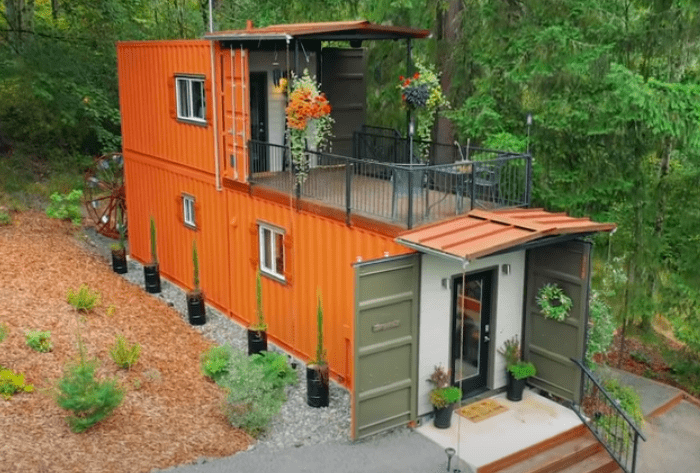
Regarding construction safety, shipping container homes have the same safety measures as any other home. They are built with strong steel walls that can withstand everything from extreme temperatures to strong winds and storms, giving you peace of mind that your home is secure in all kinds of weather. And because they’re made from recycled materials, you can be sure your home is made from only the highest quality materials available.
The interior of a shipping container home is just as safe as any other type of housing. You can build using fire-resistant insulation and integrated electrical wiring that meets all safety standards. And because our containers are designed with an open floor plan concept, you won’t have any hidden corners or crevices where mold or mildew could accumulate over time.
How much do shipping container homes cost?
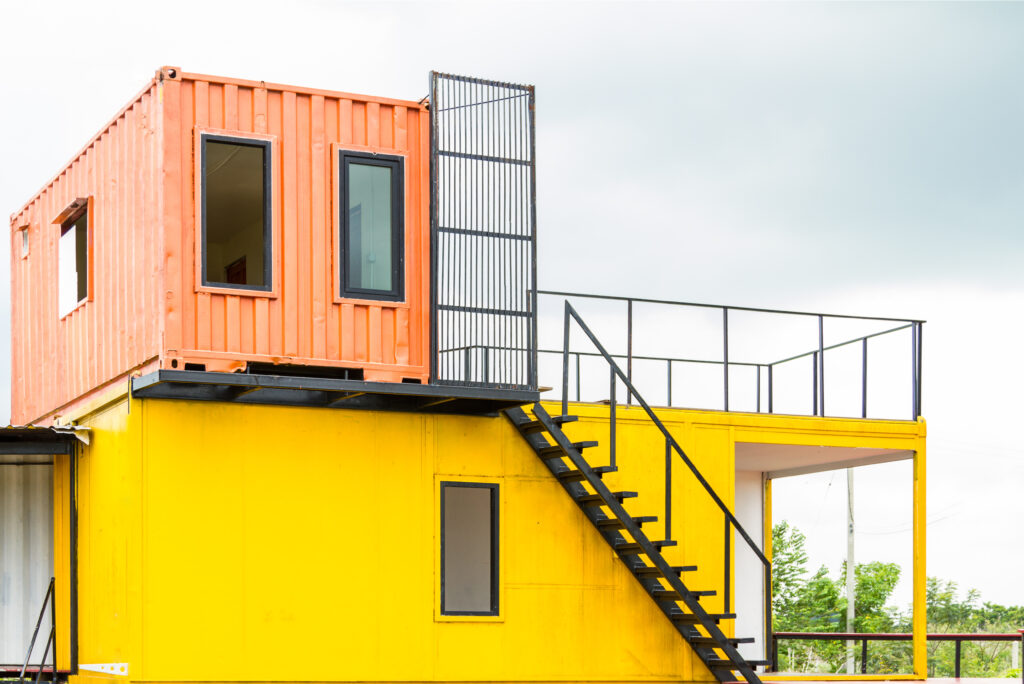
When it comes to building a shipping container home, the cost can vary greatly. It all depends on the type and size of the container you choose and any additional design and construction costs you may incur. Fortunately, there are ways to save money when building a shipping container home.
Your budget will determine the size and design of your shipping container home. Smaller homes will cost less than larger ones, and some containers already come with insulation, windows, doors, and other features that could reduce your overall build costs. You can also purchase used or refurbished containers to save money on your materials. Used, empty shipping containers can range in cost from $1,500–$4,000, and new shipping containers cost between $2,000–$15,000.
A fully built-out container home done by professionals can range in cost from $40,000 to over $100,000. Of course, it’s not just about the cost of the containers themselves. You’ll also need to factor in design and construction costs for electrical wiring and plumbing installation. A professional contractor can help you estimate these costs so that you can create a realistic budget for your project.
In addition to these upfront costs, you should consider any ongoing maintenance or repair expenses necessary once your shipping container home is finished. These expenses include painting, landscaping, furniture replacement, and more.
Finally, don’t forget about other aspects of budgeting, such as taxes and insurance premiums for your shipping container home. These will vary depending on where you live, so it’s important to research local regulations before deciding your project budget. With all of this information in hand, you should be able to create an accurate picture of what a shipping container home will cost!
How long will shipping container homes last?

The average shipping container is designed to last up to thirty years, but with proper care and maintenance, it can last even longer! With regular maintenance, you can be sure that your shipping container home will stand the test of time. By using the best materials and techniques to build your shipping container, you can extend the structure’s useful life.
Shipping containers are built to travel worldwide on the oceans and seas. According to American Trailer Rentals, “When empty, a 40′ or 45′ steel ISO high cube container can resist up to 130 mph winds! A standard height empty 40′ steel ISO container can resist even more – 140 mph. A smaller empty 20′ standard steel ISO container can top that at 150 mph winds.”
How do I find financing for a shipping container home?
The first step to finding financing for a shipping container home is to understand the different types of lenders that may be available. Banks, credit unions, and private lenders may offer financing for your shipping container home. Each type of lender has its own unique criteria for approval, so it’s important to research each one thoroughly before making a decision.
Additionally, you may want to consider government-backed loans such as FHA or VA loans. These loans often come with more attractive rates and terms than traditional lending sources. However, they can also require more paperwork and have more stringent requirements for approval.
There are 13 types of alternative housing financing, and you can find details about them in our article, Financing Your Alternative Home: Exploring Available Options. It’s best to remember that you may need to do a private loan as many banks don’t approve of alternative housing.
How to build a container home?
If you’re all in on building or buying a shipping container home, how do you decide which size will fit your needs? You may also wonder how to prepare the containers for conversion and what modifications and insulation must be done. How do you properly install plumbing and electrical systems in your shipping container home? How do you make your shipping container home energy-efficient? What types of appliances and furniture will fit best inside? This section will go over all of those questions for you.
How do you decide which size shipping container will fit your needs for a home?
A typical shipping container measures about 8 feet wide by 8.5 feet tall and can be up to 40 feet long, so like any tiny home, you have 160–320 sq. ft of living space if you have one container. This can make creating a home with multiple rooms or a lot of storage space challenging. You can buy more, but that will increase your costs.
Once you have an idea of the size that works best for your needs, we can help you decide which container is right for you. There are various sizes available – from 20-foot containers to 40-foot containers.
How do you prepare a shipping container for conversion?
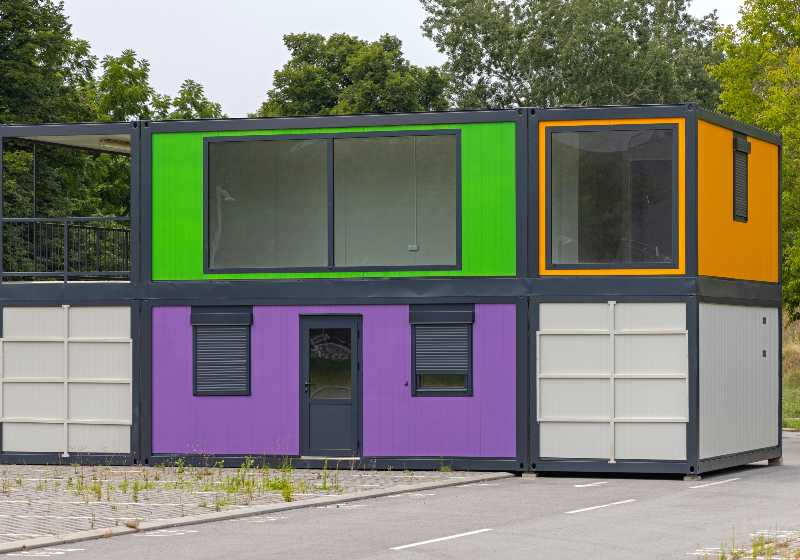
When embarking on the journey of constructing your very own shipping container home, the first step is deciding what you’d like your home to be like. What rooms do you need? How much space will you require? Where should your windows and doors be placed? It’s important to draw a floor plan that sticks to the dimensions of standard shipping containers to ensure the design is aesthetically pleasing and logistically sound.
Next, you can search for ideas on Google or Pinterest and be inspired by other builds. Look at different layouts and consider how they could be implemented in your own space. It can also help to look at photos of existing shipping container homes for ideas. When planning where windows and doors should go, don’t forget to consider how they will affect the flow of light and movement inside your home. Small porthole windows might look charming, but large French doors will likely let in more light.
You may have all the ideas, but constructing a shipping container home from scratch isn’t easy. Luckily, plenty of resources are available online that provide helpful tips for getting started with this project, such as detailed instructions for cutting out walls and installing insulation. Doing some research before beginning construction pays off so that you know precisely what materials and tools are required. Once you know what you would like your shipping container home to look like, it’s time to move on to the building.
The third step is sourcing materials such as flooring, drywall or paneling, paint, tiles, vinyl planks, and furniture that fit your design concept yet remain within budget. You may need help from a qualified tradesperson or architect when considering things like plumbing or electrical work, so don’t forget to factor this into your budget. Shopping around is always a good idea when buying materials. Depending on how much of the work you plan on doing yourself versus hiring professionals will determine how long this part takes.
What modifications and insulation must be done for a shipping container to be home?

When building a shipping container home, certain modifications and insulation needs must be considered. The most important of these is making sure that the shipping container is insulated correctly. Without proper insulation, your shipping container cannot retain heat or keep out the cold. This can drastically reduce the comfort level of your home and increase energy costs significantly.
Another critical factor is structural integrity. It would be best to ensure that the walls and roof are structurally sound before you move in, as weak walls and floors can be a safety hazard. This means reinforcing any weak spots and adding additional support beams if needed. Additionally, you need to inspect all potential sources of water leakage, as this can cause severe damage to your structure if it goes unchecked.
Ventilation is another critical consideration when building a shipping container home. Without proper ventilation, condensation can build up inside the container, leading to mold or mildew growth. Ensure you have an adequate number of windows and other air intakes installed to prevent this from happening and keep your home safe from any potential health hazards.
You need to consider soundproofing if you want your shipping container home experience to be comfortable and enjoyable. While soundproofing materials may add some extra costs upfront, they can go a long way towards reducing outside noise levels so that you can relax and enjoy living in your new space without being disturbed by outside noises like traffic or construction sites nearby.
How do you make your shipping container home energy-efficient?
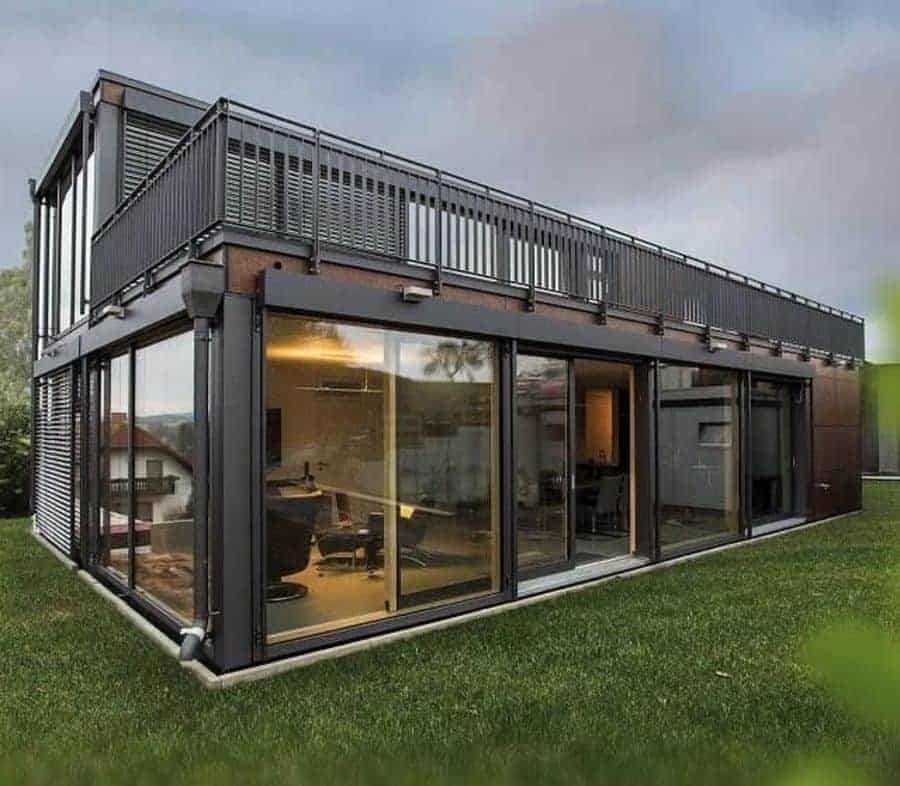
The first step to making your shipping container home energy-efficient is choosing the proper insulation. Insulation is vital to keeping the cold and warm air out, so select an insulation that fits your needs. We highly recommend using spray foam, as it is flexible and can easily fill any nooks and crannies you may have in the container walls.
The second step is to use efficient lighting. While traditional lightbulbs can be used, we highly recommend LED lights as they are more energy-efficient and last much longer than regular bulbs. Furthermore, if you’re trying to save money on electricity bills, look for lights equipped with motion sensors so they will only turn on when someone enters the room.
Thirdly, be sure to invest in energy-efficient appliances. Look for products with Energy Star ratings or those with a high-efficiency rating from your local energy provider. This will help reduce your electricity bill over time as these appliances use much less electricity than traditional ones.
Fourthly, consider installing a solar panel system on the roof of your container home. Solar power has become increasingly popular in recent years and is a great way to generate clean energy while reducing reliance on conventional energy sources. Not only can it help to reduce your electricity bill, but it can also make it easier for you to go off-grid if desired.
Lastly, ensure you properly seal any air leaks or cracks along the walls of your container home so that no warm air escapes during winter and no cool air escapes during summer months. You can do this with some caulk or weatherstripping or hire a professional if desired. Sealing these areas will help keep your home cool in the summer and warm in the winter, saving you money on your energy bills in the long run!
How do you properly install plumbing and electrical systems in your shipping container home?
Electrical wiring and plumbing are also crucial to building a shipping container home. While it may be possible to do some simple wiring and plumbing yourself, hiring an electrician and plumber is best to ensure everything is done correctly and safely. It would also help to ensure that all wiring and plumbing conform to local building codes for your home to pass inspection when it comes time to move in. A professional will be sure that it is taken care of for you.
What to do if you are going to DIY plumbing and electrical systems
First, you’ll need to plan how you want your plumbing and electrical systems to look. This means deciding where pipes will run, where outlets will be placed, and how the wiring will be connected. You’ll also need to consider any local building codes affecting your design. Once you have a plan in place, it’s time to start the installation process.
You’ll begin by preparing the area for your plumbing and electrical system installation. This includes digging trenches or cutting holes for pipes and outlets and creating a solid base for any wiring that needs to go through walls or ceilings. After that is taken care of, you can begin running the piping for the water supply and drain lines. When installing the plumbing fixtures like faucets, toilets, showers, etc., ensure they are adequately sealed not to cause any leaks down the line.
For electrical systems, safety is critical! It’s important that all wiring is done correctly so that no one gets shocked while using outlets or appliances in the home. Start by laying out the wires from each outlet or appliance to their respective power source (such as an outlet box). Once everything is connected correctly, use a voltage tester to ensure no live wires are exposed before turning on power at the breaker box.
Finally, inspecting all work done and ensuring everything is up to code before moving on with other projects in your shipping container home is important. Ensure all pipes are sealed correctly and all outlets have a working ground wire attached before putting on any finishing touches like wall plates or trim work. With these steps complete, you can confidently move forward, knowing that your plumbing and electrical systems have been properly installed!
What types of appliances and furniture will fit best inside a container house?
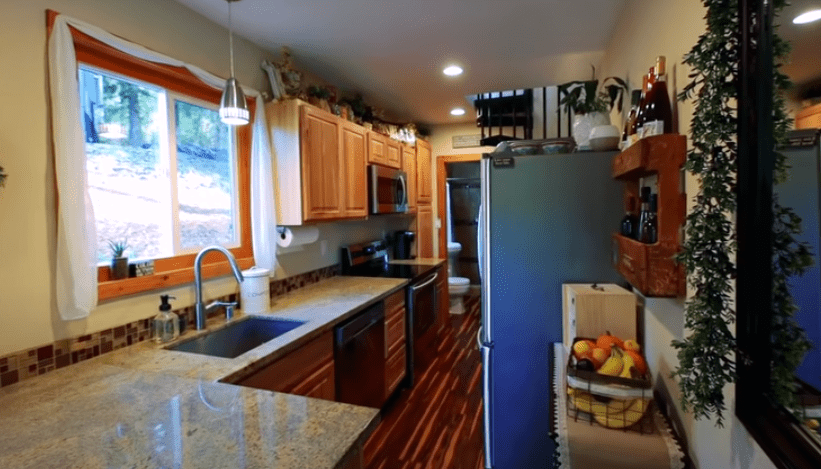
When it comes to furnishing a shipping container home, it’s important to remember that space is limited. Choosing the right appliances and furniture that will fit your needs and your home’s interior is essential for ensuring a comfortable and functional living space.
Compact refrigerators and microwaves are great for saving space, and plenty of different models are on the market. For appliances, it’s best to stick with smaller models designed for energy-efficient use in tight spaces. Stoves can also be installed in a shipping container home, but you may choose a model with burners that can be retracted into the countertop when not in use.
One of the most important considerations regarding furniture is how much space it will take up. Look for pieces designed with small spaces in mind, such as sofas with armless designs or beds with built-in storage compartments underneath them. You may also opt for multifunctional pieces such as ottomans or chairs that can double as storage containers.
Don’t forget about lighting, either! Installing overhead lights along with floor and table lamps can help set the tone of your living space while adding more light and visibility inside the container.

Finally, don’t be afraid to get creative with your décor! Painting the walls or adding wallpapers or other accent pieces can help make your shipping container home feel like your own personal sanctuary! With these tips, you can create a comfortable and stylish living space inside your shipping container home!
With this guide and a little research, you have all the tools and knowledge needed to build a fantastic shipping container home that looks great while saving money on construction costs and helping reduce your carbon footprint!
Frequently asked questions about container houses
What are shipping container homes?

Container homes are a unique and innovative way to own or rent a dwelling. These homes are made of recycled shipping containers that are reinforced, insulated, and finished for use as a home. They come in various sizes; the standard ones are around 10′ x 8′, 20′ x 8′, or 40′ x 8′. The height of each shipping container varies between the standard height of 8′ 6″ to 9′ 6″ for a “high cube.” You can use them in many configurations, providing an attractive, cost-effective alternative to traditional stick-built houses. Not only are these homes stylish, but they are also eco-friendly, as they are constructed with recycled materials.
Can a shipping container home be moved?
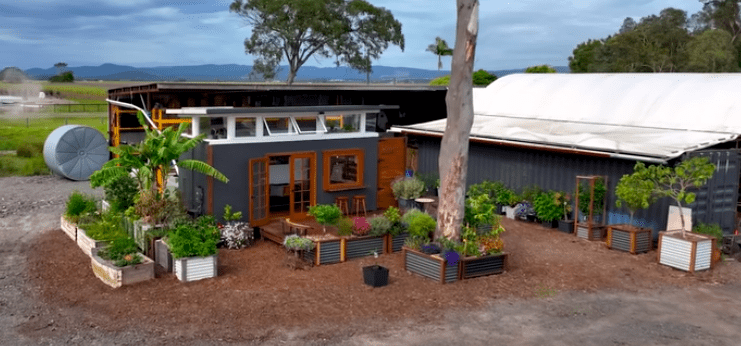
Yes! Whether you’re looking for a change of scenery or an opportunity to start fresh in another area, relocating your home is the perfect solution. You can easily relocate your shipping container home anywhere you want. As long as you know the new location meets all zoning regulations; you can move your shipping container home just about anywhere. And with minimal environmental disruption, it’s an eco-friendly way to switch up where you live.
The first step in relocating your shipping container home is finding a reputable and experienced moving company specializing in moving these homes. They should have all the right equipment and know-how to take care of the entire relocation process in the most efficient way possible.
They will need to make sure that the transportation route and destination are safe for your home. This means ensuring that all roads and highways are wide enough for them to transport them without any issues or delays. They should also make sure that no obstacles are blocking their path, such as low-hanging trees or power lines.
Once they arrive at your new location, they must secure the shipping container home onto its foundation at its new location. They will also need to make sure that all connections – such as water and electricity – are secure so that everything is working correctly after relocation. And once everything has been secured, you can finally enjoy living in your new shipping container home!
Can container homes withstand a hurricane?
Shipping container homes are designed to be strong and durable to handle extreme weather conditions like hurricanes.
Proper engineering is essential to ensure your shipping container home can withstand a hurricane. A team of experienced engineers should be consulted to guarantee that your building meets all local codes and regulations and safety protocols for hurricane-prone areas.
The walls of the shipping containers should also be reinforced with additional steel or concrete to provide extra strength in case of high winds or flooding.
The roof of the shipping container home is also an important consideration when it comes to withstand a hurricane. To protect against wind damage, metal roofing should be installed that has been rated to stand up against extreme winds. Additionally, gutters should be installed to keep rainwater away from the home’s walls, which will help reduce the risk of flooding.
In addition to proper engineering and construction, you should prepare your shipping container home for a hurricane before it hits. This includes installing window shutters or boards over windows to protect them from flying debris, clearing away any loose items from around the house that could become projectiles in high winds, trimming trees around the property that could damage the house in heavy winds or rains, and storing any outdoor furniture away from your home during a storm.
Why are shipping container homes good?
Shipping container homes are quickly becoming the housing solution of the future. Not only are they incredibly affordable, but they’re also incredibly versatile and customizable. From simple studios to luxurious three-bedroom homes, shipping container homes can be designed to fit anyone’s needs and preferences. Plus, with the added advantage of being highly energy efficient and eco-friendly, you’ll get a home that is good for the environment and your wallet.
The main benefit of shipping container homes is their portability and ease of assembly. With just a few tools and some basic construction knowledge, you can easily build your own shipping container home in a matter of days or weeks. And if you ever need to move, it’s easy to disassemble your home and take it wherever you go.
Another great benefit of shipping container homes is their durability. Shipping containers are designed to withstand extreme weather conditions and heavy loads during transport, making them ideal for harsh climates like deserts or mountains. With proper insulation and protection against the elements, these homes will last for years without needing major repairs or maintenance.
When it comes to design potential, there really is no limit to shipping container homes. Their rectangular shape makes them easily arranged into any layout imaginable, from single-level bungalows to multi-story mansions. You can customize your home by adding windows and doors, insulation, skylights, or even solar panels if you choose!
Building a shipping container home is an excellent way to make sure that your building materials remain sustainable over time. Instead of relying on new materials, which may require hefty environmental costs down the line, shipping containers reuse existing resources for a more eco-friendly approach to building a home.
Why do people think shipping container homes are bad?
One of the biggest misconceptions about shipping container homes is that they are cramped, uncomfortable, and small. Nothing could be further from the truth! Shipping containers can be transformed into spacious and luxurious homes with plenty of room to move around. With a few modifications, you can make a shipping container home as big or as small as you want.
Another common misconception is that shipping container homes are not structurally safe. Again – that’s simply not true. Shipping containers are made from steel, which makes them extremely durable and strong. They are built to withstand the elements and can last for decades with proper maintenance.
Many people also seem to think that shipping containers must be low-quality or cheaply made because they are so affordable. This could not be further from the truth! Shipping containers are built to high standards and can make for incredibly comfortable living spaces if appropriately constructed.
People assume that building a home from shipping containers is difficult or time-consuming – but it doesn’t have to be! With some help from experienced professionals, you can quickly have a shipping container home! It’s quite an easy process and much faster than traditional construction methods!
Finally, many believe shipping container homes will make their property appear “unsightly” or “ugly” – but this isn’t true! Shipping containers come in various shapes, sizes, and colors, allowing endless design possibilities. You can even customize your shipping container home with colorful paint jobs or other decorations if you want!
Are shipping container homes cheaper than traditional homes?
Shipping containers are affordable – typically 50% less than building with conventional materials like brick and mortar. This gives you an instant advantage when it comes to construction costs. If you want to learn more about how shipping container homes compare to traditional housing regarding cost, here’s what you need to know.
Another factor that adds to the affordability of shipping container homes is their durability. With extremely strong steel frames, these homes can withstand a wide range of weather conditions and are designed to last up to 10 times longer than a traditional home. This means fewer repairs and replacements over time, saving you even more money in the long run.
Regarding energy efficiency, shipping container homes also have the edge over traditional builds. With insulation that helps keep your home cooler in the summer and warmer in the winter, you could see significant monthly savings on your energy bill. And by using solar panels or other sustainable energy sources, you could reduce your energy bills even further.
What does a container house cost?
For example, a 20-foot-long container can provide you with over 120 square feet of living space and cost anywhere from $2,500 to $4,000 for the container. Those who purchase a new container rather than a used one expect to pay closer to $12,000 to $15,000.
If you’re looking for more space or want something more customized, you can always opt for larger containers or combine multiple containers side by side or on each other. For example, two 40-foot containers will give you nearly 400 square feet of living space and cost around $8,000 to $12,000, depending on whether it’s used or new.
The build-out and customization costs vary due to your style preferences and the materials you buy. You can be budget conscious, go with recycled and reusable materials or top-of-the-line everything, and expect to pay retail prices.
A small container house costs between $10,000 and $40,000, all finished. A larger one, with many containers, can quickly exceed $100,000, according to Angi, with the price impacted by size, materials, finishes, and accessories. HomeAdvisor says converting a shipping container into a tiny home costs about $19,600.
Where can you buy a shipping container home?
Customized shipping container homes can be found by many manufacturers. We found a few that you can check out. Remember, we haven’t worked with any of them and don’t have specific recommendations, only a place to start your research.
•https://bobscontainers.com/store-category/containerhomes/
•https://advantagestructuresllc.com/
We also do have plans for shipping container homes you can buy if you’d rather DIY your build. These step-by-step blueprints for shipping container homes allow you to customize and build on your budget.

